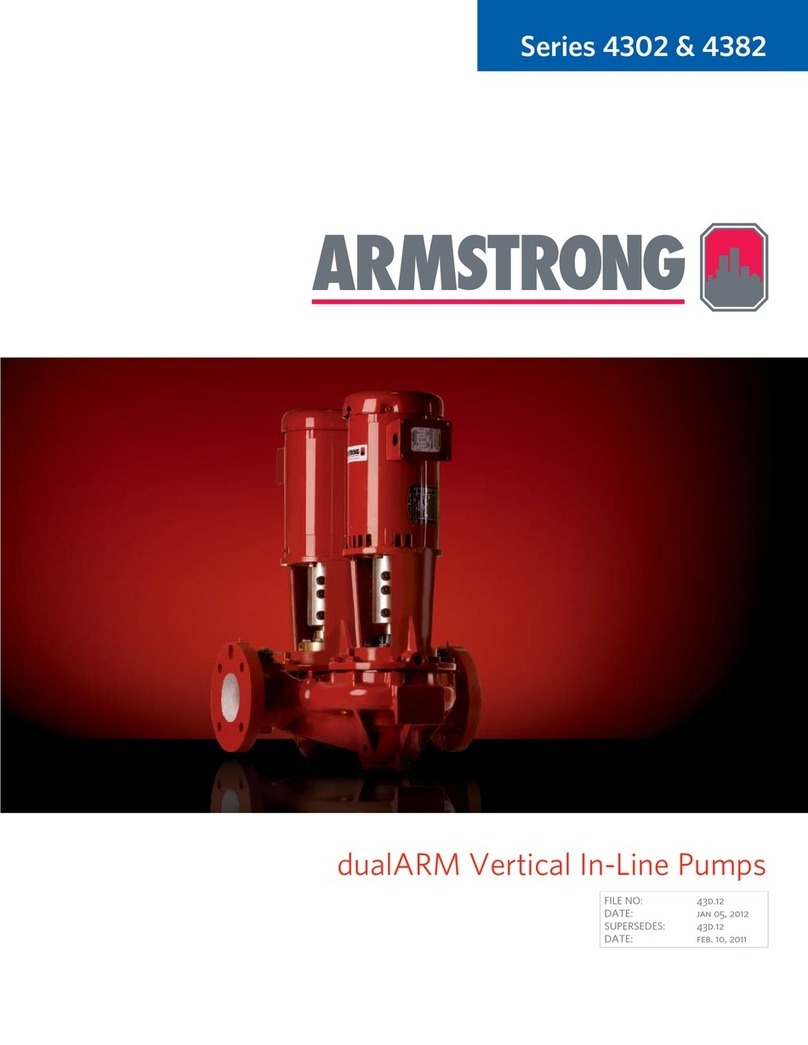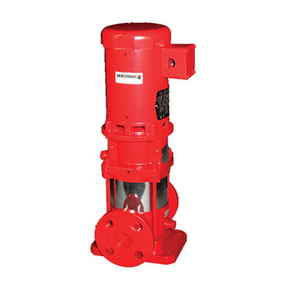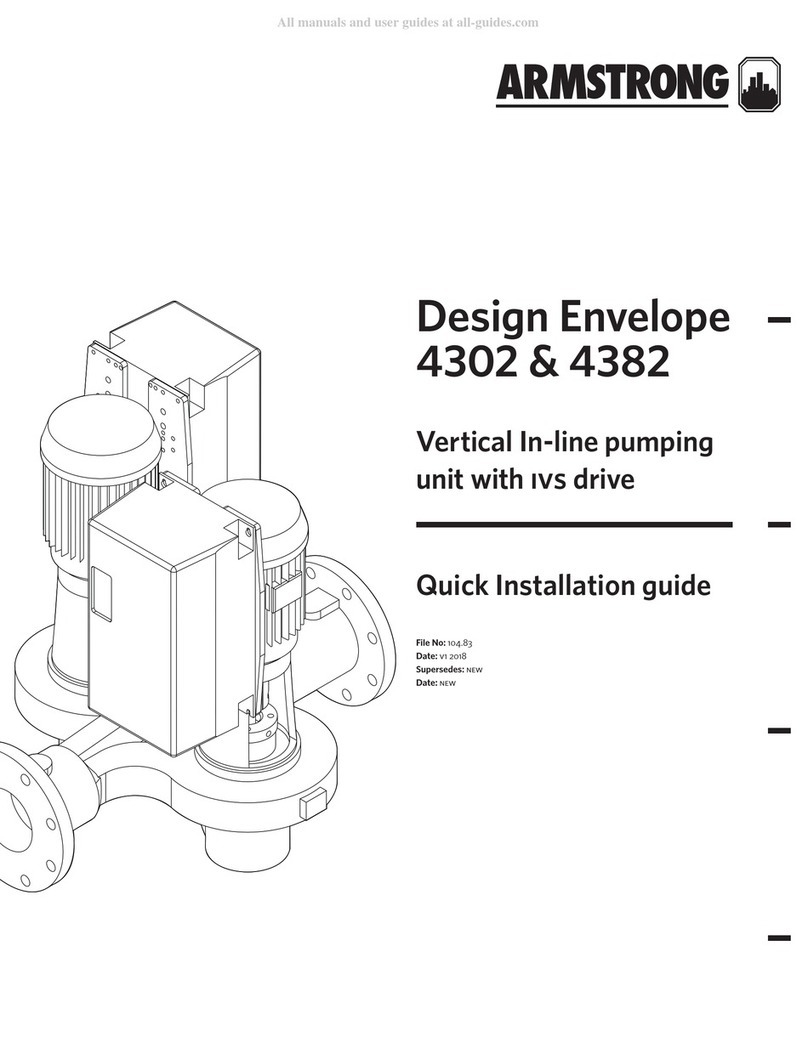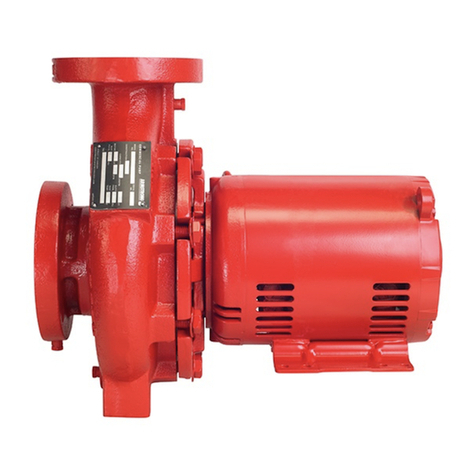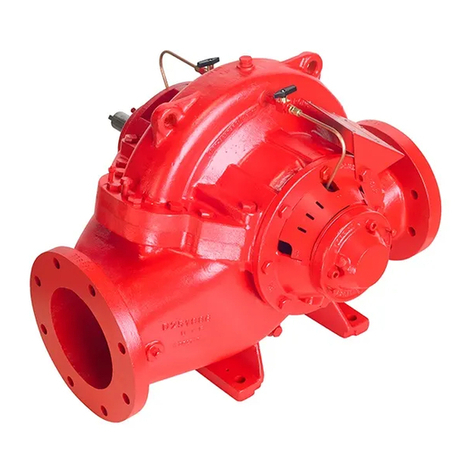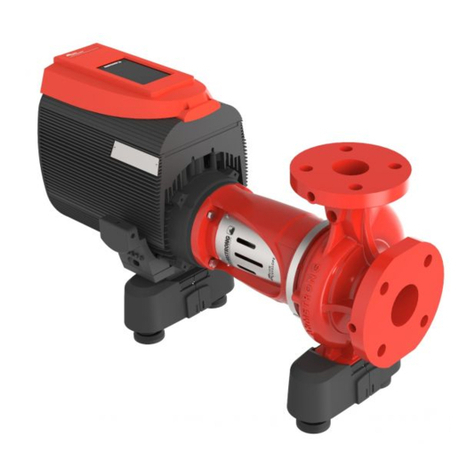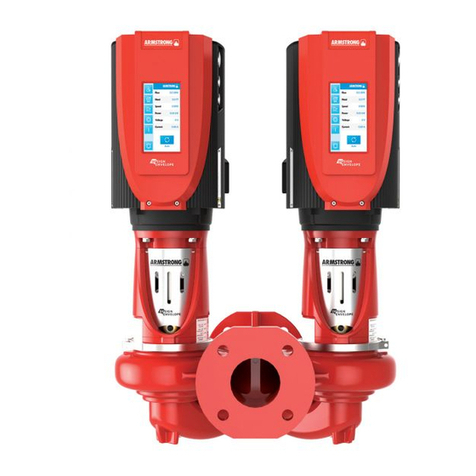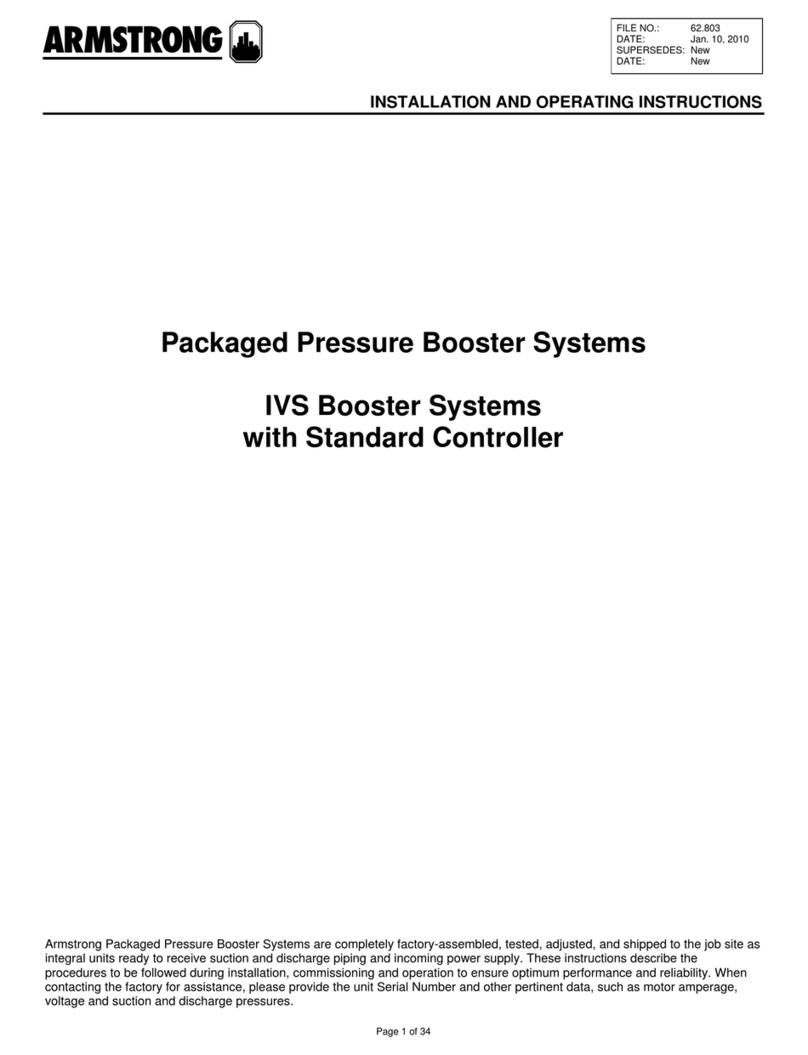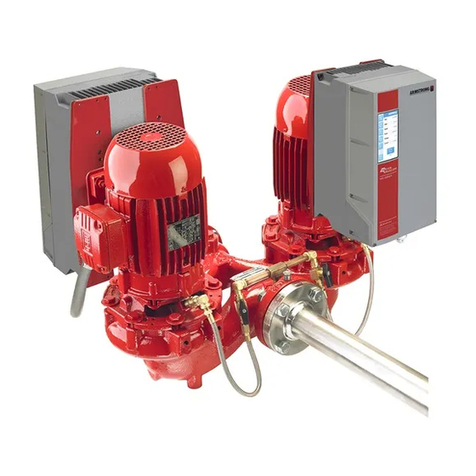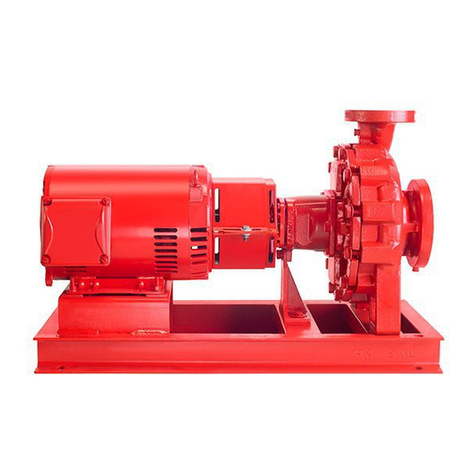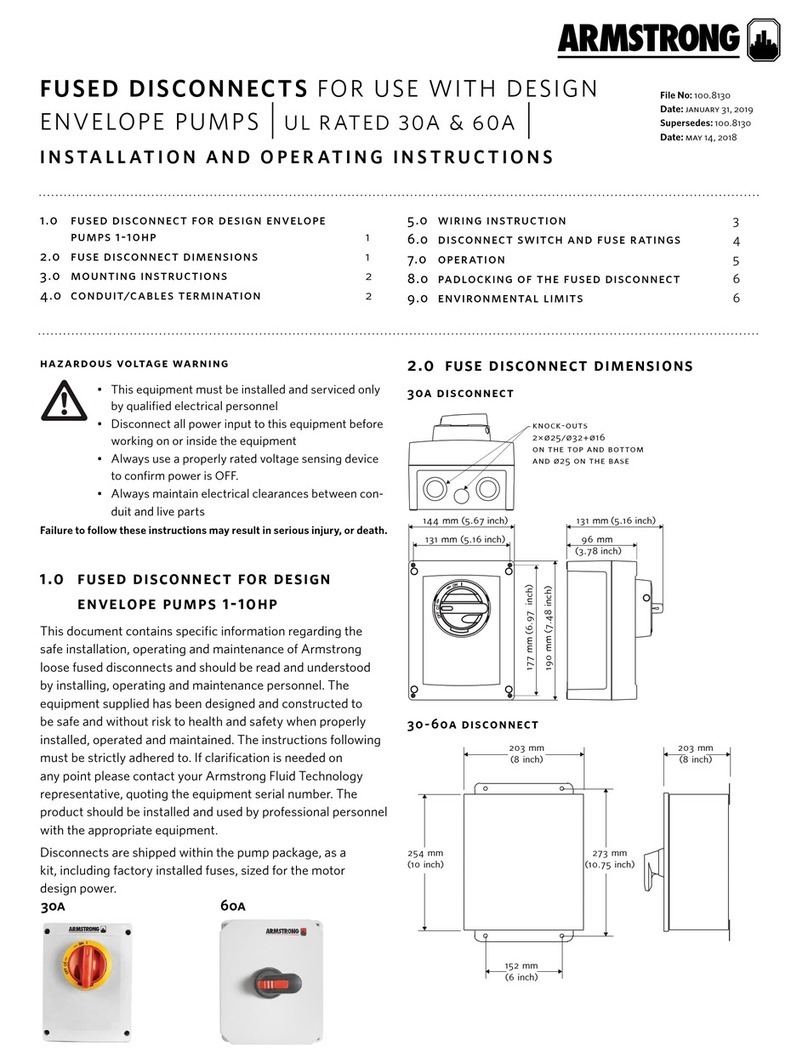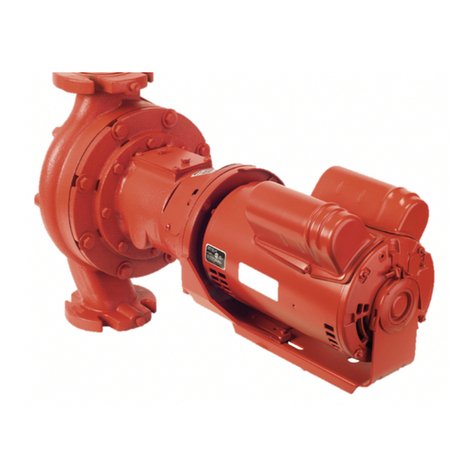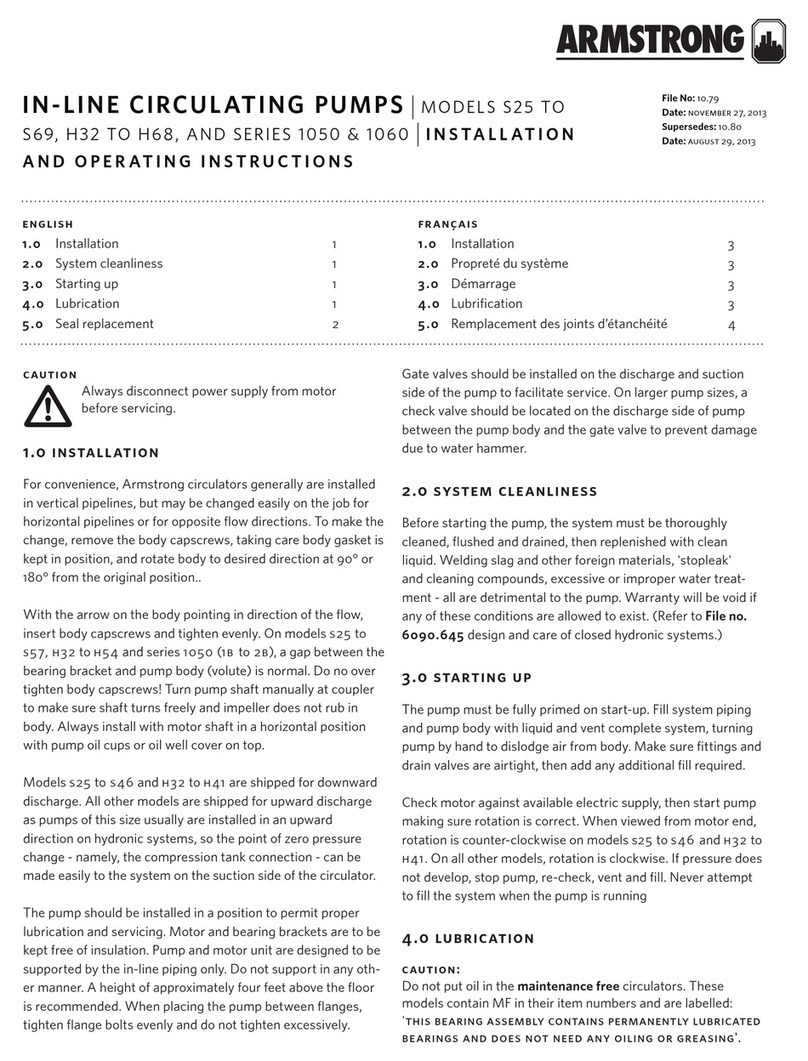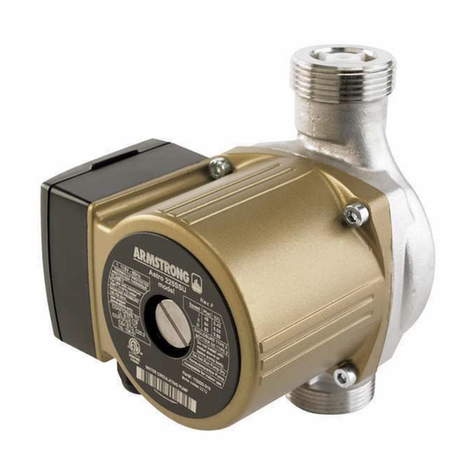
installation &
operating instructions
Design Envelope 4200h & 4280
End Suction Horizontal Pumping Units
7
Place pumping unit on the foundation and insert metal wedges
on either side of the foundation bolts under base plate. Leave
approximately 0.75" (19mm) space if grouting.
Carefully level the unit by adjusting the wedges until base is
supported in a level position
With the proper gauge, check suction and discharge flanges of
the pump for proper positioning.
When the baseplate is completely level, the foundation bolts
should be tightened evenly and firmly.
1.2.3 grouting
Armstrong’s fabricated steel base plates, as supplied with
4200H Design Envelope pumps, are manufactured to ansi/hi
1.3.5 rigidity standards for free-standing base plates. As such,
no grouting in place is necessary for the base plate to hold shaft
alignment of any Armstrong base mounted pumping unit. End-
suction horizontal base mounted Design Envelope pumping units
are supplied with rigid couplings which need no re-alignment at
installation or following seal service. Thus grouting is not neces-
sary; though the following instructions are for installers who still
wish to also secure the base in place with grout:
• Construct a dam around the foundation with grout forms, as
shown in the illustration.
• Use a good mixture of non-shrinking grout. The grout
should be the consistency of heavy cream.
• Spaces are provided in the base plate to permit pouring of
the cement and stirring. Fill under the base completely, stir-
ring to assure proper distribution of the grout. Check to see
that the grout flows under the base plate evenly.
• When the grout has hardened thoroughly, usually after
48 hours, final tighten the anchor bolts and remove the
grout forms.
1.2.4 pump piping – general
Never connect a pump to piping, unless extra care is taken to
measure and align the piping flanges well. Always start piping
from pump.
Use as few bends as possible and preferably long radius elbows.
Do not use flexible connectors on the suction or discharge of
a vertical in-line pump, unless the pump is rigidly mounted to
a foundation.
Ensure piping exerts no strain on pump as this could distort
the casing causing breakage or early failure due to pump
misalignment.
All connecting pipe flanges must be square to the pipework and
parallel to the pump flanges.
Suction and discharge pipes may be increased or decreased at
pump nozzle to suit pump capacity and particular conditions of
installation. Use eccentric reducers on suction connection with
flat side uppermost.
Layout the suction line with a continual rise towards the pump
without high points, thus eliminating possibility of air pockets
that may prevent the pump from operating eectively.
A strainer of three or four times the area of the suction pipe,
installed in the suction line, will prevent the entrance of foreign
materials into the pump. V" (3mm) diameter perforations in
the strainer is typical.
In open systems, test suction line for air leaks before starting;
this becomes essential with long suction line or static lift.
Install, at the pump suction, a straight pipe of a length equiva-
lent to four or six times its diameter; this becomes essential
when handling liquids above 120°f (49°c). Armstrong suction
guides may be used in place of the straight pipe run and in-line
strainer.
Install an isolation valve in both suction and discharge lines on
flooded suction application; these valves are used primarily to
isolate the pump for inspection or repair.
Install a non-slam non-return check valve in discharge line
between pump and isolation valve to protect pump from
excessive back pressure and to prevent water running back
through the pump in case of driver failure on open systems.
Armstrong Flo-Trex valves may be used in place of isolation
valves and non-return check valves. Flo-Trex valves use plug
& disk design which may also be used for throttling excessive
system flow for constant speed pumps and, if necessary, for
variable speed pumps. Do not throttle variable speed pumps
unless absolutely necessary.
note:
Design Envelope 4200H units are accurately aligned at the factory
prior to being shipped and do not need re-aligning when installed.
Alignment on a Design Envelope 4200H unit may be verified by
assuring an equal and parallel gap between coupling halves on
both sides of the coupling.
Install foundation bolts
Install grout forms
Fill in base with grouting
